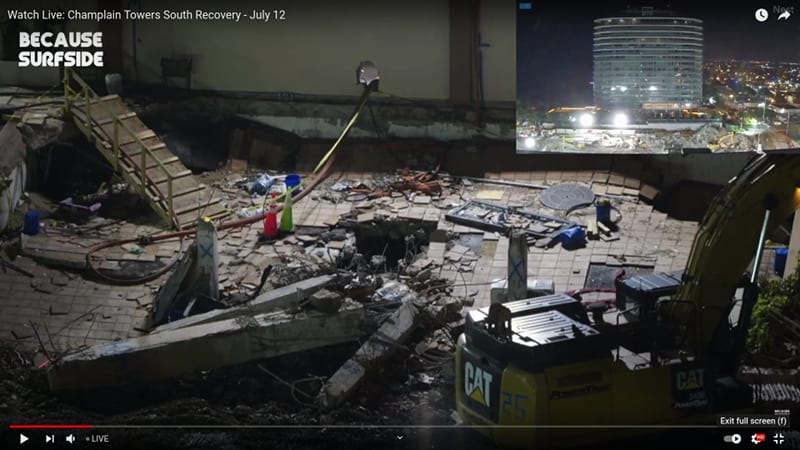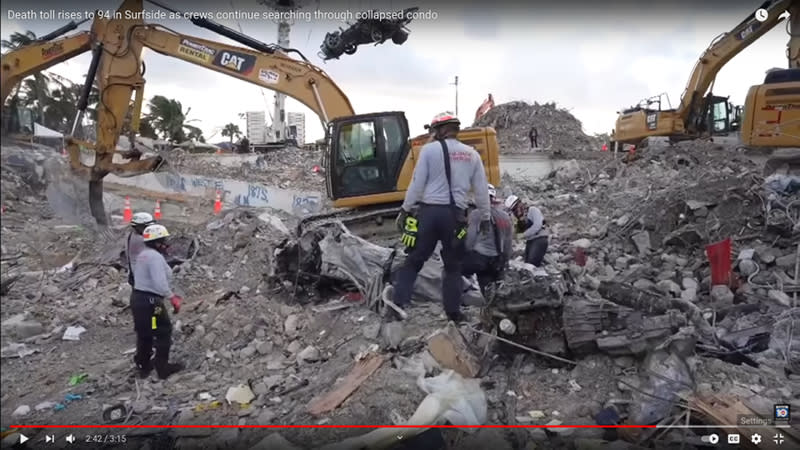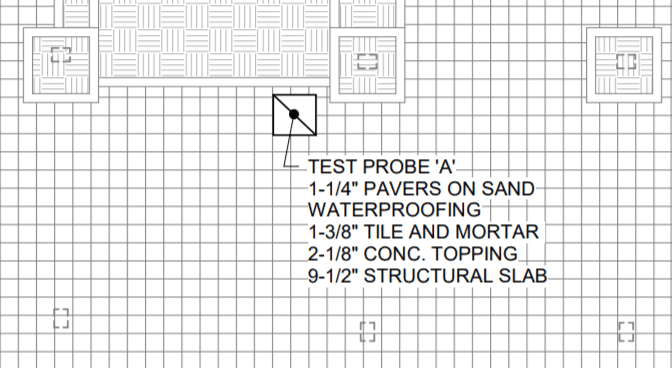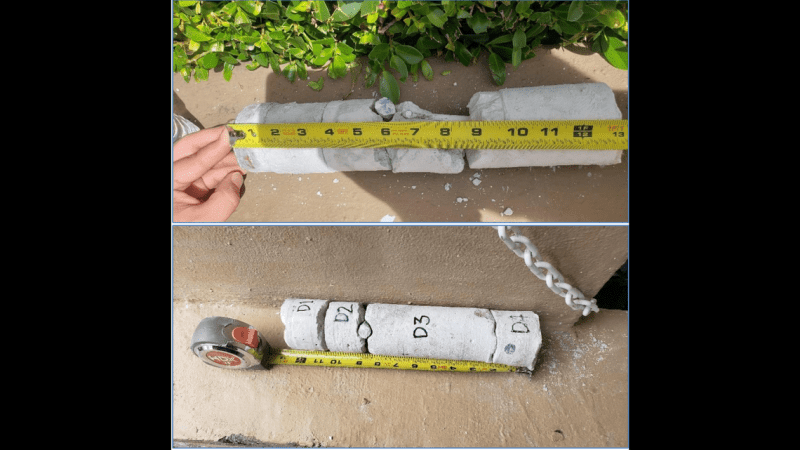There seems to be something missing in test core A. If you add up the depths of different materials in test core A, the result is 14-1/4". The picture taken by MC shows a test core that is 13" in depth. MC defines the top layer as 1-1/4" pavers on sand. I assume the pavers and sand were removed before coring and therefor would not be included in the picture of the core sample. So, if you add back the 1-1/4" pavers to the 13" core, you get 14-1/4". This leaves no room for the sand and makes me wonder how much sand does one need to lay out in order to install pavers over existing tile? According to the internet, you need 1 to 1-1/2" of sand to form a nice smooth bedding for pavers. Therefor there could be a layer of sand that is unaccounted for.
In addition, if the waterproofing had failed and there was 2-3" of rain in the days proceeding the collapse, the materials could have been saturated with water, adding to there dead load. Below I have calculated the approximate dead load for the stack of materials on top of the pool deck structural slab and have also included the weight of water absorbed by each material with rough estimates of absorption by weight.
WORST CASE: Pool deck loading according to test core A with additional 1.5" sand layer needed for paver installation and saturated materials.
1-1/4" pavers = (11psf/sf/in)x(1.25in/sf) x 1.06 (6% absorption) = 14.6 psf
1.5" sand layer = (120pcf) x (1.5/12ft/sf) x 1.06 (6% absorption) = 15.9 psf
1-3/8 tile and mortar = ((10psf) / (3/4in)) x 1.375in x 1.03 (6% absorption for mortar layer only) = 19.4 psf
2-1/8" concrete topping slab = (150 pcf) x (2.125/12) x 1.1 (10% absorption for ordinary concrete) = 29.2 psf
9-1/2" structural slab = (150 pcf) x (9.5/12) x .06 (6% absorption for commercial concrete) = 7.13 psf
TOTAL = 86.2 psf
From my experience it is reasonable to assume that the engineer designed the structural slab for 100 psf LL + self weight of the 9-1/2" slab and ignored the weight of the floor covering assuming it would just be 1 layer of tile or pavers like CTN. ASCE allows you to ignore the 15 psf load for partitions when designing for 100 psf LL, so ignoring 15-20
psf for the 1-3/8" layer of tile wouldn't be surprising.
The 2-1/8" layer of concrete topping is kind of a mystery also. The contractor could have built the 9-1/2" structural slab level, then poured a topping slab to build in the slopes required by the original 1979 architectural plans. The engineer might never have know about this extra 25-30 psf layer.
Therefor, the slab could have been permanently loaded to 80-90% of its allowable design load and could have been in this condition just prior to the collapse. If you add in deterioration due to chlorides, soft concrete, questionable design of connections used in this time period, and poor installation of required rebar over the column, then there doesn't necessarily need to be another event to start the collapse other than the slab to column connections finally gave out progressively undermining the stability of the exterior columns.





